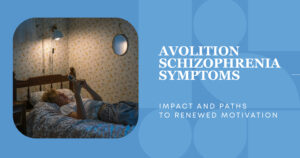Living with schizophrenia isn’t something that fits neatly into checkboxes or tidy descriptions. It’s messy. Chaotic, sometimes. But also, strangely, beautiful in ways most people never see. And maybe that’s where art steps in. Schizophrenia drawings, often created in moments of deep emotion or fragmented thought, can feel like a direct transmission from a mind that doesn’t follow the usual rules. They’re not just doodles on a page. They’re expressions of fear, confusion, insight, and sometimes, a kind of calm that words can’t quite capture. So today, we’re diving into that world. The world where mental health and creativity collide. And yeah, it might be a bit raw, a little tangled, but it’s also deeply human.
What Can Schizophrenia Drawings Reveal About the Inner World?
Let’s just say this upfront: schizophrenia drawings aren’t meant to be analyzed like textbook diagrams. They don’t follow a script. They don’t always make sense to an outsider. But to the person who made them? They’re incredibly real.
- These drawings often show fragmented faces, twisted geometry, or chaotic environments.
- You might notice repetitive patterns, intense eyes, or scribbled words that loop endlessly.
- There’s usually a sense of both desperation and clarity, like the artist is fighting to explain something they can’t quite say out loud.
- Some images feel dark or frightening, while others are bizarrely serene, like a brief mental oasis.
- Often, they reflect experiences of hallucinations or delusions, not literally, but in symbols or warped forms.

Basically, what shows up on the paper can tell you a lot about what’s going on beneath the surface. But again, it’s not about decoding. It’s about witnessing.
The Transformative Role of Art Therapy in Mental Health
Alright, so here’s the thing: art therapy isn’t just painting for fun. For many teens (and adults) living with conditions like schizophrenia, it becomes a way to access what’s otherwise locked away. When you can’t find the words, or don’t trust them, art therapy lets your hands do the talking.
Let’s take a quick look at how this works:
| Aspect | Impact on Mental Health |
| Nonverbal Communication | Allows expression when verbal skills are impaired or overwhelmed by symptoms. |
| Sensory Engagement | Uses touch, color, and motion to ground individuals and reduce anxiety. |
| Safe Emotional Release | Offers a controlled space to explore feelings of fear, anger, or confusion |
| Therapist Collaboration | Builds trust and rapport between client and therapist through shared creative process |
| Self-Insight | Encourages reflection on internal states pand connections between thoughts and emotions. |
There’s no right way to “do” art therapy. That’s kind of the point. It meets you wherever you are, no pressure, no judgment.
Unpacking Visual Expression as a Tool for Emotional Release
Here’s where things get a little personal (and a little vulnerable). Visual expression, especially for teens going through the storm of mental health struggles, can feel like a lifeline. Not everyone wants to talk. Not everyone can.
How Psychiatric Art Captures the Chaos and Clarity of Mental Illness
There’s something almost paradoxical here. Psychiatric art, the kind that flows out of someone living with schizophrenia, often mirrors both extreme disorder and shocking clarity. You might see a chaotic background but a perfectly outlined figure. Or wild, jagged colors circling a small, peaceful shape in the middle.
It’s like the artwork is saying: This is what it feels like. All of it. All at once.
That kind of expression doesn’t just tell you about the illness, it invites you inside it, even for a second.
Creativity in Mental Illness: From Turmoil to Therapeutic Insight
And honestly? Creativity in mental illness isn’t just about the pain. There’s something else there, too. Insight. Resilience. Even humor sometimes. Some teens at Hillside Horizon have said drawing helped them understand their triggers better. Or that seeing their emotions “on paper” helped them stop blaming themselves.
It doesn’t fix everything. But it’s a step. A way forward.
Navigating Emotional Expression Through Psychological Art Practices
There’s a reason emotional expression keeps coming up. Suppressed emotion is like a pressure cooker, right? And when you live with something as intense as schizophrenia, that pressure can get scary.
But through psychological art, you give it a valve.
- One teen might draw the same swirling figure over and over, trying to map out recurring hallucinations.
- Another might paint huge angry strokes in red and black, then come back with soft pastels later.
- Sometimes it’s messy and unclear, and other times, it’s precise, like a coded message.
And none of it is wrong. That’s the beauty of it. You get to show what’s happening inside, even if you don’t understand it yet.
Overcoming Stigma and Isolation with Therapeutic Art Techniques
Let’s be real for a second, stigma sucks. And for teens with schizophrenia, the isolation can be brutal. People assume things. They avoid eye contact. They whisper. And slowly, you start to internalize all of that.
But therapeutic art can punch holes in that isolation. It doesn’t need anyone’s permission.
Here’s what some teens discover through creative techniques:
| Technique | Benefit |
| Collage Building | Helps reconstruct a sense of self by choosing and assembling meaningful images |
| Mask Making | Explores identity, including the “hidden” self vs. what others see. |
| Color Emotions\Charting | Matches feelings to color schemes, teaching emotional awareness |
| Freeform Doodling | Offers spontaneous release of internal tension or obsession |
| Sequential Art (comics) | Narrates experiences of psychosis or recovery in a structured, creative form |
Sometimes these methods work quietly, behind the scenes. Other times, they spark huge breakthroughs. Either way, they’re legit.
Fostering Healing and Self-Discovery via Art at Hillside Horizon for Teens
Okay, so you’re probably wondering: where does all this come together? Well, at places like Hillside Horizon for Teens, it’s not just about treatment plans and progress charts. It’s about connection, to others, to self, to expression.
Here, schizophrenia drawings aren’t tucked away like secrets. They’re part of the healing journey.
You’ll find sessions where teens sit side by side, painting in silence but totally seen. Or group projects where someone’s wild sketch of a creature gets turned into a mural. No one’s asking for perfection, just presence.
And when a teen finally steps back from a finished piece and says, “I didn’t even know I felt that way,” well, that’s the kind of moment that sticks.
Need a place where your teen can explore that kind of healing? Reach out to Hillside Horizon for Teens today. You don’t have to navigate this alone.

FAQs
1. How can art therapy facilitate emotional expression in individuals with mental health challenges?
It gives them a way to express feelings they might not have words for. Sometimes, drawing or painting makes it easier to understand what’s going on inside.
2. What role does visual expression play in the therapeutic process for those dealing with mental illness?
It helps people externalize their experiences, so instead of just feeling overwhelmed, they can see and work through those emotions.
3. In what ways does psychiatric art offer insights into the psychological states of individuals?
It reveals patterns, themes, or imagery tied to delusions, hallucinations, or emotional states, kind of like a window into how someone sees the world.
4. How can creativity in mental illness serve as a pathway to self-discovery and healing?
Creating art can uncover hidden strengths, clarify emotions, or even help someone recognize they’re not alone in what they’re feeling.
5. What are some effective therapeutic art techniques for enhancing emotional expression and coping with mental health issues?
Things like collage, mask-making, or drawing with color-emotion guides can help channel hard feelings into something constructive and meaningful.





